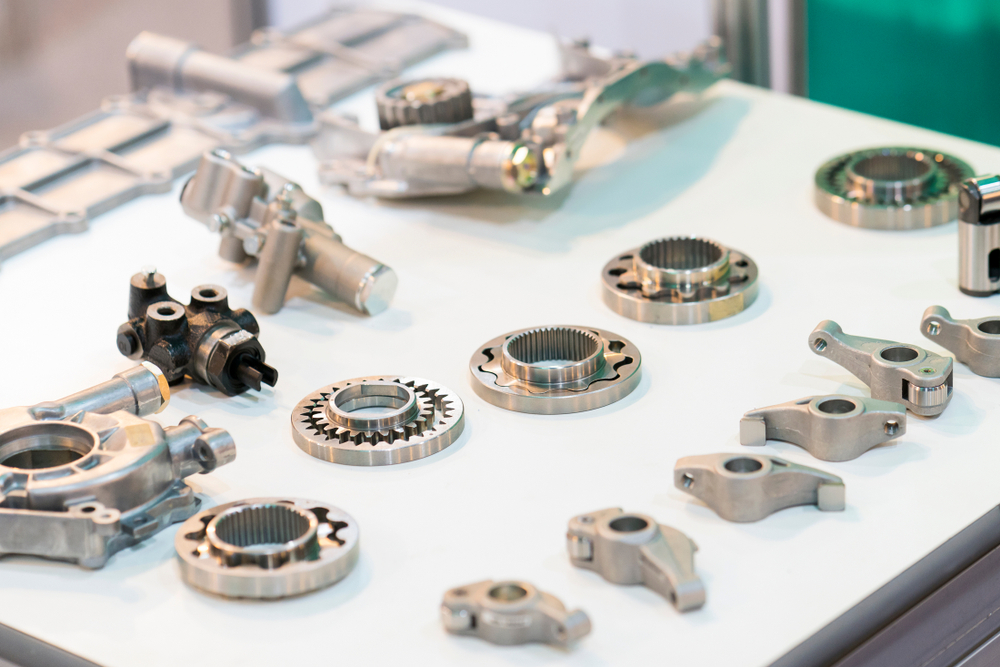Which material number is generally used for cast aluminum parts? What can be done for the surface treatment of castings, which treatment method is more popular at present? Is there any difference in the surface treatment process from ordinary machined aluminum alloys (such as 6061)? So this is a guide on how to do subsequent surface treatment of cast aluminum parts.

Usually, after the aluminum alloy is formed, the surface treatment process is mainly anodizing and spraying. But for cast aluminum, the situation is slightly different.
Generally speaking, cast aluminum mainly refers to an abbreviation of aluminum-silicon, aluminum-silicon-copper, aluminum-magnesium and other series of aluminum alloys through the casting process. It can be said that most cast aluminum is not suitable for deformed aluminum alloys. Such anodized, not suitable for anodized mainly in the following two points:
1. Cast aluminum parts, especially aluminum-silicon-(copper), aluminum-copper and other anodized films are incomplete and have poor protection performance. Moreover, the color of the anodized film is gray and black, which is only suitable for black dyeing and has poor decoration. This is the main reason why cast aluminum parts are not anodized.
2. The structure of cast aluminum parts is usually complicated, and there are many corners and corners. In the anodizing tank, the dead corners of the parts are not easy to oxidize, and the sharp corners are easy to be ablated by current concentration.
Therefore, the surface treatment of cast aluminum parts is mainly based on spraying, supplemented by oxidation. When cast aluminum needs to be oxidized, we usually do “alkaline degreasing” on the base surface first, which is quite dry to activate the surface and make the oxide film more uniform. For small cast aluminum or die-cast aluminum that needs to be dyed black, we also need to perform “chemical polishing.”, “mechanical polishing” and other treatments. Generally speaking, the anodizing of cast aluminum and ordinary aluminum alloy is similar, but there are differences.
After the surface is cleaned, the part is surface treated. The commonly used surface treatment methods are:
Painting, plastic spraying, baking varnish, oxidation (not recommended), electroplating, electrophoresis, chemical solution plating. Occasionally, manufacturers use treatments such as hot-dip plating (where parts are placed in molten metal). However, because the die-casting parts contain air bubbles, which will expand at high temperatures and cause parts to crack, it is not recommended to use them.
– Oxidation. The raw material contains silicon, and if it is anodized directly, a layer of gray-black powder will be precipitated on the surface, which cannot be solved by ordinary oxidation processes. After polishing, sandblasting and oxidation treatment can alleviate the problem, but the actual oxidation effect is generally not ideal. Personally, it is not recommended to anodize the surface of die castings. In case of oxidation, black anodizing is recommended.
– Electrophoresis. Special paint is required.
– Chemical solution plating. After soaking, the chemical solution is heated to form a coating on the surface of the part. The heating temperature of the solution is generally around 90 degrees, which is not enough to cause the casting to crack.
-Spray paint. Because the surface adhesion of aluminum parts is not high, it cannot be directly painted. You need to spray a special primer first, and then spray the topcoat. In order to improve surface adhesion, it can be sprayed after phosphating.
– Plastic spraying. Also known as electrostatic spraying. You can search for it yourself.
-Baked varnish. Baking after phosphating and painting. Generally, the temperature is about 200 degrees, which is not enough to cause cracking, but it is still recommended to do small batch experiments before baking parts in large quantities.